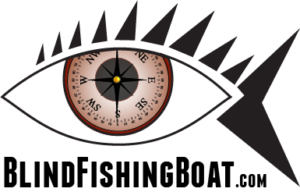From Far and Wide
“From Far and Wide — Honouring Great Canadians” and the “Web-4-All” Technology
An exhibit recently launched by Canada’s Office of the Governor General entitled, “From Far and Wide – Honouring Great Canadians”, located in downtown Ottawa across from Parliament Hill, “celebrates Canada’s national honours and the extraordinary contributions of Canadians from across the country”. I have the honour of being included in this exhibit.
A few years back I conceived and funded the development of Web 4 All, a world-leading technology to make computers and the internet accessible to people with disabilities and literacy impairments. The application accommodates all disability and literacy issues by allowing people with visual disabilities to have screens magnified or read aloud, permits those with difficulty using keyboards to use settings or displays that address most dexterity issues, supports individuals with literacy challenges to access information using both sight and sound, and more. The goal is to ensure all Canadians, including those with disabilities and literacy challenges, are able to use public computers in schools, libraries and community centres to communicate electronically and access on-line information and services.
The Web-4-All initiative resulted in my receiving a number of awards, including the Meritorious Service Medal civil division in 2006 from Canada’s Governor General. The Meritorious Service Decorations are separated into military and civil divisions, with two levels each: a medal and a cross. The Military Division recognizes individuals for their outstanding professionalism and for bringing honour to the Canadian Forces. The Civil Division recognizes individuals who have performed an exceptional deed or an activity that brought honour to their community or to Canada.
The Web-4-All technology went on to lay groundwork for international standards for human-machine interfaces. The IMS Global Learning Consortium, an international consortium that develops open technical specifications to support distributed learning, released the “Accessibility for Learner Information Package”, which constitutes the second iteration of the specifications first developed as part of the Web-4-All initiative. The Accessibility for Learner Information Package (ACCLIP) is a schema and model for describing and recording individual preferences regarding the user interface and the selective retrieval of content for computer mediated learning systems. Access-4-all is now the 3rd iteration of the Web-4-All specification as championed by the Inclusive Design Research Centre at OCAD University. Version three of this specification was recently released.
For more information about Web-4-All technology and the pilots carried out across Canada, visit the journal article published by the American Federation of the Blind, “Canada Stands Tall with Web-4-All”: http://www.afb.org/afbpress/pub.asp?DocID=aw060307You +1’d this publicly. Undo
Also, the ITD Journal published an article titled, “Web-4-All through Site, Sound and Touch”: http://people.rit.edu/easi/itd/itdv09n2/web4all.htm
And, the Globe&Mail newspaper published an article, “Disabled get high-tech boost”: http://www.theglobeandmail.com/technology/disabled-get-high-tech-boost/article1158774/
The University of Toronto’s “Assistive Technology Resource Centre” has more information about the Web-4-All technology and the Global Learning Consortium human-machine interface standards, including links on how both can be downloaded for free: http://web4all.atrc.utoronto.ca/html/atrc/atrc.html
For more information about the Inclusive Design Research Centre at OCAD University and their on-going work with the Access-4-All specification: http://www.imsglobal.org/accessibility/index.html

